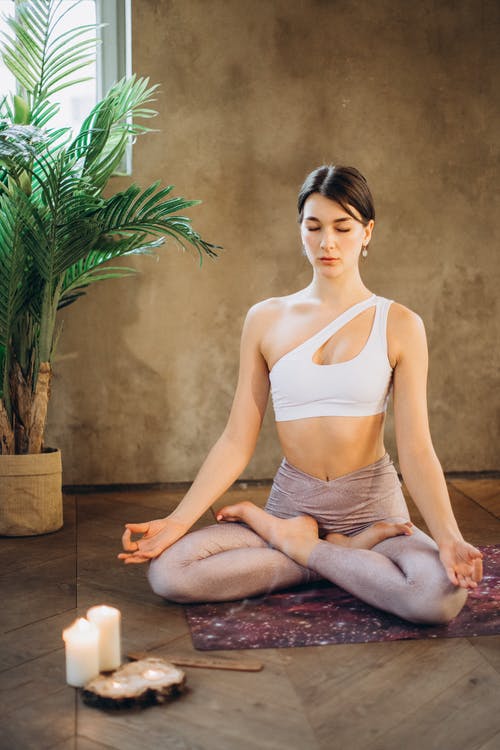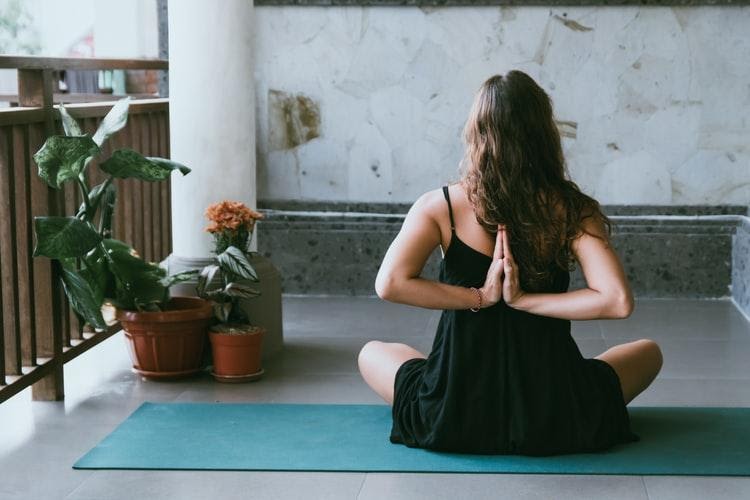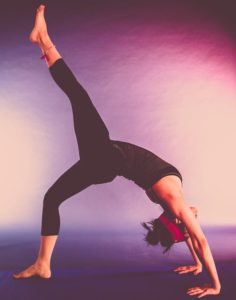Image Source: Unsplash
Contributing Writer: Dan Matthews
The coronavirus pandemic has changed the way of life for so many people across the globe. At one point, over 90% of the United States was under some kind of lockdown. One benefit of being under a stay-at-home order is that it’s given many people the opportunity to spend more time doing the things they enjoy, including yoga.
If you’ve just recently gotten into yoga, you might have more time to develop it as a deeper hobby. In these uncertain times, the practice of yoga may actually be more important than ever, thanks to its stress-relieving benefits.
But between the death toll surrounding coronavirus going up each day and different rules and regulations being put in place, you might start to feel that your normal yoga space at home just isn’t cutting it. Sometimes, the negative energy from everything that’s happening in the world can seep into your space, and make your experience less impactful.
Since you’re spending more time at home, it could be the perfect time to renovate your yoga space and to turn it into something that allows you to be fully calm and present during your sessions.
Let’s look at a few different ways you can create your own yoga sanctuary at home.
Bring Nature Inside
A study published in Frontiers of Psychology discovered that spending just 20 minutes outside in nature each day can significantly lower the level of stress hormones in your body. Nature has natural soothing and healing properties. In addition to lowering stress, it can:
- Boost your mood
- Increase your energy
- Lower your blood pressure
- Reduce anxiety and anger
With so many benefits, it’s no wonder outdoor yoga classes are popular. But in this time of social distancing, you’re probably not able to go to your favorite local park for a class with other people. So, why not bring more natural elements into your yoga space? By inviting nature in, you’ll get more out of your sessions and can enjoy some of the lasting benefits.

Not sure where to get started? One of the easiest ways to bring nature into your space is with plants. You can use larger floor plants or create your own decorative plant hangers to attach to the walls or ceiling. Plants not only help to reduce stress but some varieties will even improve air quality, allowing you to focus on taking fuller breaths.
Choose your indoor plants wisely in order to reap the most benefits. While you’d need almost 700 plants to clean all the toxins out of a 1500-square-foot space, the right plants can lower eye irritation, bolster attention spans, and ease congestion. Snake plants are one of the toughest houseplants available, which makes them one of the most versatile. They are even recommended by the Lung Institute as one of the top air-purifying plants.
Other easy natural elements to consider include pure lighting from your windows or installing a water decal to give you the sense of being outside. Utilizing apps or music that provides nature sounds while you’re in your session can also allow you to soothe yourself with the healing powers of the great outdoors.
Eliminate Your Distractions
Yoga is about gaining balance and control in your life. That can feel hard to do when you’re distracted, even in the comfort of your own home. Whether it’s the news going on in the world plaguing your mind, or your own family members who are “stuck” at home as well, it’s important to have a space that is free of any and all distractions during your sessions.
One of the best ways to do that is to minimize the clutter within your designated space. No one wants to come up from a downward dog to see a messy room staring them in the face. If you do, you’ll probably start thinking about the mess, stressing over it, and all of your efforts and relaxation can quickly fly away.
Designate a room or specific area of your home strictly to your sessions, if possible. It doesn’t have to be a large space, but make it yours. Clear the clutter, paint it with a neutral color that allows you to relax instead of distracting you from your focus. You may even need to talk to your family members about having a certain amount of quiet time in the home each day while you do yoga.
Whatever the case, eliminating your distractions can make your yoga space feel less like just a room, and more like a sanctuary.
Utilize Technology
It’s easy to think that technology would be a distraction. And, in some cases, it could be. Having the television on in the background while you’re in Savasana probably isn’t the best way to stay focused.
But, there are ways to bring non-distracting digital devices into your yoga sessions that can actually benefit you and help you to reach your goals. Wearable fitness trackers, for example, can do everything from:
- Monitor your heart rate
- Track the distance you move each day
- Monitor your sleep cycle
- Count your steps
- Count your calories
If yoga is part of your fitness routine or if you’re using it as a way to maintain your overall health, fitness trackers give you a way to track your data over time and see how much progress you’re making in your goals, without distracting you from what you’re doing.
During this time of social isolation, technology can also help you to feel more connected while you’re doing yoga. Utilizing online yoga classes to help you relax is a great way to combat stress and feel more connected with others while you’re doing it as you listen to your instructor.
You can even turn your yoga space into a “retreat” by inviting your friends to join you virtually in an online yoga class. You can connect via apps like Zoom or FaceTime, and take the class together at a designated time.
Making a specific space for yourself — not only during these times of uncertainty but whenever you’re feeling stressed and disconnected — can help you to get the most out of your yoga sessions at home. Take the time to turn a space in your home into a place that works for you, that speaks to you, and that showcases your personality so you can reach your goals and reduce your stress levels each day.

Dan Matthews is a writer with a degree in English from Boise State University. He has extensive experience writing online at the intersection of business, marketing, lifestyle, and health. You can find him on Twitter and LinkedIn.












More Stories
Yoga Routines For You…
Ashtanga Yoga: Everything You Need To Know
4 Key Benefits of Doing Aqua Yoga